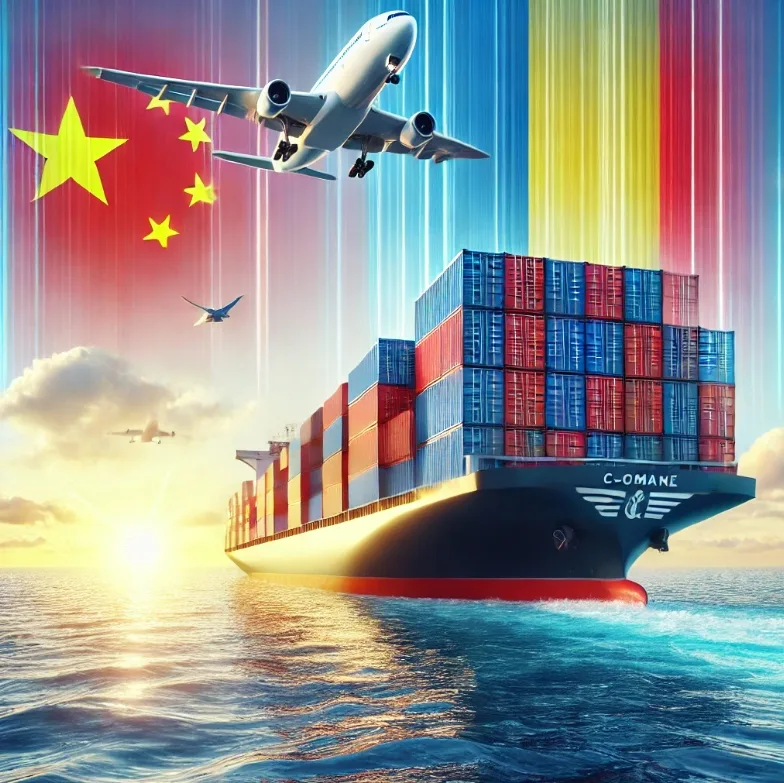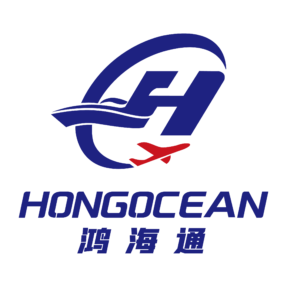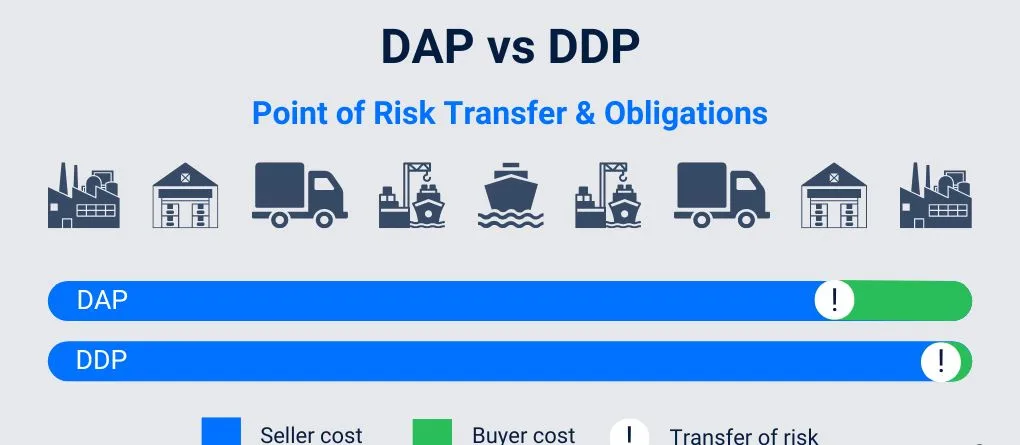
In today’s pressing globalization of trade, China has become the main procurement source for global buyers thanks to its large manufacturing base and price advantage. At the same time, Romania, as a member of the European Union, is also an important gateway for Chinese companies to expand into the European market due to its intermittent tariff policies and market potential. For companies that want to introduce Chinese goods to Romania, understanding the entire process, from procurement to transportation to customs clearance, is the key to ensuring smooth trade.
However, the import process is not simply a three-step operation of “placing an order – shipping – receiving the goods”. It involves choosing the right mode of transport, complying with customs regulations, calculating the necessary duties and tariffs, preparing the necessary documentation, and working with a professional freight forwarder. Omissions at any stage can lead to customs clearance problems, increased costs, or even the detention of goods or fines.
This article will systematically sort out the core knowledge you need to import goods from China to Romania. Whether you are trying the cross-border procurement process for the first time or are a business owner looking to optimize your existing logistics, you will find practical guidance and strategies in this article.
Romania import guide: key steps for Chinese goods entering the EU market
Successfully importing Chinese-made goods to Romania means dealing with the practical problems of long-distance transportation and complying with the EU’s unified trade and customs policies. Here are the key steps that must be taken in the export process from China to Romania:
1. Determine whether the goods are suitable for entry into the EU market
Before importing, first confirm whether the goods meet EU product requirements, regulations, and standards. For example, electronic products must comply with CE certification requirements, toys must pass the EN 71 standard, and textiles must be labelled with the composition and origin label. Goods that do not meet EU standards will not be able to pass customs clearance and may even be confiscated or shipped.
In addition, some goods, such as food, cosmetics, and medicines, require additional registration, licensing, or testing. Importers need to understand the regulatory requirements for the products involved in advance and prepare the corresponding compliance documents.
2. Obtain an EU EORI number
EORI (Economic Operators Registration and Identification) is the EU identification number for all companies trading across borders. Romanian importers must have a valid EORI number to make declarations in the customs system. The number can be applied for through the Romanian National Customs Authority (ANAF), usually with documents such as company registration information and tax numbers.
3. Formally sign a contract with the Chinese supplier
In border trade, a clear purchase contract protects both parties’ rights and interests. The contract should include the following elements: product name and specifications, quantity, unit price, total price, delivery method (e.g. FOB, CIF), payment terms, delivery time, liability for breach of contract, etc. Clear terms can be used as a legal basis in a dispute.
4. Prepare commercial invoice and packing list
Before shipping, Chinese exporters must provide a complete commercial invoice (commercial invoice) and packing list (packing list). These two documents are the core materials for customs declaration and clearance. The invoice should list the product description, quantity, unit price, total amount, place of origin, buyer and seller information, and payment method. The packing list needs to list the details of the product packaging method, size, gross weight, net weight, etc.
5. Select the appropriate logistics method and prepare for export customs clearance
Once all the commercial documents are ready, the Chinese exporter must declare the goods for export to Chinese customs. Usually, this step is handled by a freight forwarder or customs broker. After the export declaration is completed, the goods are shipped, and transportation begins.
6. Complete the customs clearance process after arriving in Romania
After the goods arrive in Romania, the customs broker appointed by the importer must submit all relevant documents to the Romanian customs authorities, including the commercial invoice, packing list, transport documents (e.g. bill of lading, Air Freight waybill) and the EORI number. Customs will calculate customs duties and VAT based on the customs value and check whether the goods meet the import licensing and certification requirements.
Only after the taxes have been levied and the documents have been checked without error will the goods be officially released and enter the Romanian market.
Freight transport from China to Romania: Analysis of the advantages and disadvantages of sea freight, air freight and rail freight
The most common freight transport methods from China to Romania include sea, air, and rail. Each extreme transport method has its characteristics in terms of price, speed, applicable types of goods, etc. Choosing the right transport method can significantly improve efficiency and reduce costs.
1. Ocean Freight: Significant cost advantages, suitable for large quantities of goods
Ocean Freight is one of the most commonly used transport methods from China to Romania and is especially suitable for bulky or heavy goods. For example, most furniture, machinery and equipment, building materials and other products are transported by sea.
- Advantages:
- Low cost, especially suitable for large quantities of goods
- Ships have large carrying capacity and can carry large quantities of goods
- Most ports provide container transport with high loading and unloading efficiency
- Disadvantages:
- Long transport time, usually 30 to 45 days
- Significantly affected by weather, port congestion, etc.
- Need to coordinate documents and work.
The main ports to depart from China include Shanghai, Shenzhen, Ningbo, etc.. In contrast, the main port in Syria is the Port of Constanta (Port of Constanta), one of the largest ports in the Black Sea region and Romania’s main import and export hub. Goods usually enter the Mediterranean via the Suez Canal and the Black Sea.
2. Air Freight: Fast, suitable for high-value or time-sensitive goods
Although Air Freight is more expensive, it has irreplaceable advantages in specific scenarios, and is especially suitable for electronic components, fashion products, samples or urgent orders.
- Advantages:
- Fast transportation, usually arriving in 5 to 7 days
- High safety, low damage rate
- Relatively functional customs clearance process
- Disadvantages:
- High cost, based on weight and volume
- Strict restrictions on types of goods (e.g. flammable and explosive goods are not allowed to be transported)
- Limited carrying capacity, not suitable for large-scale or oversized goods
The main routes depart from airports in China, such as Beijing, Shanghai, Guangzhou, and Chengdu, and enter Romania via the international airport in Bucharest, Romania (Henri Coandă International Airport) or transit airports in Germany, the Netherlands, and other countries.
3. Railway transport: a balanced solution between timeliness and cost
Recently, with the development of the China-Europe Transport Train, rail transport has become one of the most popular logistics options between China and Europe. China-Europe rail freight starts with domestic land transport (e.g. Chongqing, Xi’an, Zhengzhou), passes through countries such as Kazakhstan, Russia, and Poland, and finally arrives in Romania.
- Advantages:
- Moderate transit time (14-20 days), faster than Ocean Freight
- Lower cost than Air Freight, suitable for medium to high-value goods
- High stability, less affected by weather
- Disadvantages:
- There are many route restrictions, and it requires transfers in multiple countries
- The railway network has limited coverage and needs to be supplemented by road transport
- Infrastructure and timeliness control Currently under development
Railway transport suits medium-sized batches of electronic products, auto parts, clothing, and household goods. Due to the positioning of transit countries, the required documents and coordination work are relatively complicated, so it is recommended to use the services of an experienced freight forwarder.




